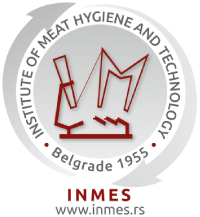A hygiene report regarding slaughter process of pig and cattle carcasses for 2017 in Serbia
Abstract
For the successful validation and verification of the HACCP system, a food business operator is obliged, among other duties, to have continuous microbiological data of carcasses which are followed by a certain dynamic that the subject himself prescribed. To obtain these data, it is necessary to perform systematic monitoring of indicator microorganisms. The most important meat hygiene indicators are Total Viable Counts (TVC) and Enterobacteriaceae (EC). TVC are defined as indicators of overall slaughter hygiene (equipment, environment, tools, workers), while EC are indicators of faecal contamination on carcasses. The aim of this study was to determine the microbial contamination of cattle and pig carcasses, level of hygiene of the slaughter process as well as whether variations hygiene levels were related to seasonality in Serbia during 2017. The year was divided into four quarters of three months each, while the microbiological results were classified into three levels of hygiene status (unsatisfactory, satisfactory or acceptable). The highest percentage of the results surveyed during the entire study was at a satisfactory hygiene level. Furthermore, we found there were differences in results between the quarters, which could be associated with seasonality. The best microbiological results, and so the best hygiene of carcasses, was recorded in the period April, May, June, while the worst microbiological results were observed in the period of July, August and September.





